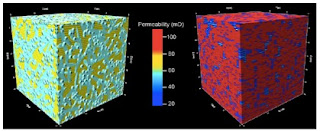Clinoforms are fundamental
sequence and seismic stratigraphic elements, reflecting information on sediment
distribution in space and time to and across shelf margins. In this
contribution, Gong et al. quantitatively explore relationships between
clinoform-growth styles and sand- and sediment-budget partitioning across shelf
margins of late Miocene-Quaternary clinoforms of the northwestern South China
Sea. The results illustrate that clinoform-growth styles represent distinct stratal
stacking patterns and sediment distribution. For example, downward-prograding
shelf-margin clinoforms with low angles of growth trajectories (Gct) and low clinoform height (Hc) favor partitioning volumes of
sediment into deep-water areas, thus are fronted by sand-rich submarine fan systems.
In contrast, steeply upward aggrading shelf-margin clinoforms with high Gct and
high Hc favor storage of volumes of sediment on shelf margins, and hence
include mud-dominated mass-transport systems downdip of shelf breaks. Gct and
Hc therefore increase linearly with sediment budget stored on shelf margins,
but decrease linearly with sand- and sediment-budget partitioning into
deep-water areas, provided similar sediment-supply conditions through time. The
results suggest that clinoform-growth styles are thus good predictors of sand-
and sediment-volume partitioning across shelf margins.
Growth styles of shelf-margin clinoforms: prediction of sand- and sediment-budget partitioning into and across the shelf by Chenglin Gong, Yingmin Wang, Ronald J. Steel,
Cornel Olariu, Qiang Xu, Xiangnan Liu, and Qianhui Zhao

